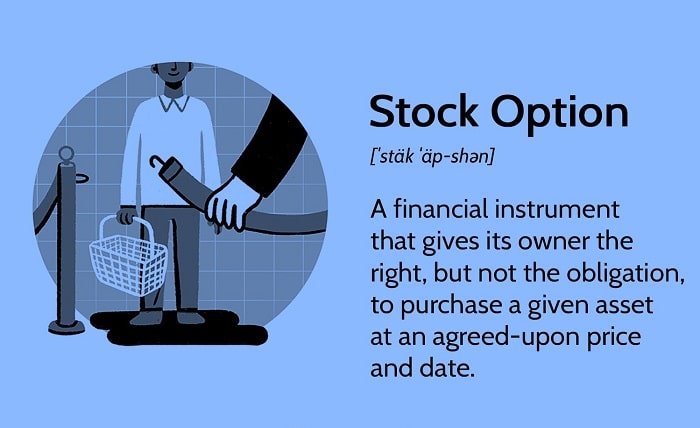Introduction
Hey there, savvy investors! Have you ever felt anxious about the ups and downs of the stock market? You’re not alone. Market volatility can be nerve-wracking, especially when you have significant investments on the line. But don’t worry—there’s a strategy to help protect your portfolio: options. Understanding how to use options to hedge your stock investments can provide a safety net and give you peace of mind. Let’s dive into the world of options and explore how they can be a valuable tool in managing your risk, whether you’re keeping an eye on the broader share market or specific stocks like the Adani Power share price.
What Are Options?
Options are financial derivatives that give investors the right, but not the obligation, to buy or sell an underlying asset at a predetermined price before or on a specific date. There are two main types of options:
1. Call Options: Give the holder the right to buy the underlying asset.
2. Put Options: Give the holder the right to sell the underlying asset.
Options can be used for various strategies, including hedging, which helps protect against potential losses in your stocks investments.
Why Hedge with Options?
Hedging with options can provide several benefits:
- Risk Management: Protect your portfolio from adverse price movements.
- Flexibility: Tailor your hedging strategy to your specific needs and risk tolerance.
- Cost-Effective: Often cheaper than other hedging methods, such as short selling.
Key Strategies for Hedging with Options
1. Protective Put
-
- What It Is: Buying a put option for a stock you own.
- How It Works: If the stock price falls, the put option increases in value, offsetting the loss in the stock.
- Example: Suppose you own shares of Adani Power and are concerned about a potential decline in the Adani Power share price. You can buy put options to protect against a drop in the stock’s value.
2. Covered Call
-
- What It Is: Selling a call option on a stock you own.
- How It Works: You earn a premium from selling the call option, which provides some downside protection. If the stock price stays below the strike price, you keep the premium.
- Example: If you hold shares of Adani Power and want to generate some extra income, you can sell covered calls. This strategy can provide a buffer if the Adani Power share price declines slightly.
3. Collar Strategy
-
- What It Is: Combining a protective put and a covered call.
- How It Works: You buy a put option and sell a call option on the same stock. The premium received from the call option can offset the cost of the put option.
- Example: If you own Adani Power shares, you can use a collar strategy to hedge against a potential drop in the Adani Power share price while still allowing for some upside potential.
How to Implement These Strategies
1. Identify Your Risk
-
- Action: Assess the potential risks to your stock investments.
- Benefit: Understanding your risk exposure helps you choose the appropriate hedging strategy.
2. Choose the Right Option
-
- Action: Select options with suitable strike prices and expiration dates.
- Benefit: Ensures that your hedge is effective and aligned with your investment goals.
3. Monitor Your Positions
-
- Action: Regularly review your hedging positions and adjust as necessary.
- Benefit: Keeps your hedging strategy relevant and effective in changing market conditions.
Real-World Examples
1. Using Protective Puts
-
- Scenario: You own 100 shares of Adani Power, currently trading at INR 100. You buy a put option with a strike price of INR 90, expiring in three months.
- Outcome: If the Adani Power share price falls to INR 80, your put option becomes valuable, limiting your loss to INR 10 per share, rather than INR 20.
2. Selling Covered Calls
-
- Scenario: You own 100 shares of Adani Power, currently trading at INR 100. You sell a call option with a strike price of INR 110, expiring in one month, and receive a premium of INR 5 per share.
- Outcome: If the Adani Power share price remains below INR 110, you keep the premium of INR 5 per share, reducing your cost basis. If the price rises above INR 110, you may have to sell your shares at the strike price, but you still benefit from the premium received.
3. Implementing a Collar Strategy
-
- Scenario: You own 100 shares of Adani Power, currently trading at INR 100. You buy a put option with a strike price of INR 90 and sell a call option with a strike price of INR 110, both expiring in three months.
- Outcome: The put option provides downside protection, while the call option generates income to offset the cost of the put. This strategy limits both your downside and upside potential, providing a balanced approach to risk management.
Benefits of Using Options for Hedging
1. Cost-Effective Protection
-
- Benefit: Options can provide a cost-effective way to hedge your stock investments compared to other methods like short selling.
2. Flexibility and Customization
-
- Benefit: Options allow for flexible and customizable strategies to suit individual risk profiles and investment goals.
3. Potential for Income Generation
-
- Benefit: Selling options (e.g., covered calls) can generate additional income, enhancing overall returns.
Things to Consider
1. Cost of Options
-
- Consideration: While options can be cost-effective, they still involve premiums that need to be factored into your strategy.
- Tip: Evaluate the cost versus the potential benefit to ensure the hedge is worth the investment.
3. Market Volatility
-
- Consideration: High volatility can impact option prices, making them more expensive.
- Tip: Monitor market conditions and choose your options wisely to avoid overpaying during volatile periods.
4. Complexity
-
- Consideration: Options can be complex and may require a learning curve to understand fully.
- Tip: Educate yourself or consult with a financial advisor to ensure you’re using options effectively and appropriately.
Conclusion
Using options to hedge your stock investments is a powerful strategy that can provide peace of mind and financial protection in a volatile share market. Whether you’re concerned about a specific stock like the Adani Power share price or your overall portfolio, understanding and implementing hedging strategies like protective puts, covered calls, and collar strategies can help manage risk and enhance returns. Remember, the key is to stay informed, choose the right options, and monitor your positions regularly.
Happy investing, and may your hedging strategies be ever successful! Feel free to share your thoughts and questions in the comments below. Let’s keep the conversation going!





